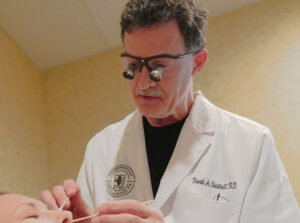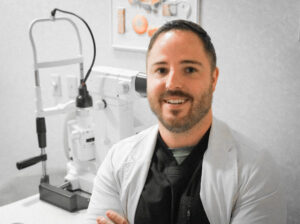Procedures
Cataract Surgery
Cataract surgery is one of the most common ocular procedure performed today. This is an operation to remove your eye’s lens when it becomes cloudy and causes blurry vision. Your natural lens is replaced with an artificial intraocular lens (IOL). Our surgeons will be glad to discuss your IOL options and their recommendations with you.
YAG Peripheral Iridotomy Laser
We use this advanced laser for our iridotomy procedures, which help patients with narrow angles, narrow angle glaucoma or acute angle closure glaucoma. This laser enables us to create a small opening in the iris, where fluid can flow to the anterior part of the eye.


YAG Posterior Capsulotomy Laser
This is a procedure that is often performed after cataract surgery. The purpose of the laser is to improve your vision if it becomes cloudy again after you have had cataract surgery.
During cataract surgery, your eye’s cloudy lens (your cataract) is replaced with a clear, artificial lens implant. When the capsule behind the lens implant becomes cloudy, a YAG posterior capsulotomy laser procedure creates a small opening in the cloudy capsule. This allows the light to pass through the capsule, resulting in clear vision.
Argon Laser
Our argon laser has multiple uses in ophthalmology, including:
- Treating glaucoma
- Repairing retinal tears
- Controlling abnormal blood vessel growth over the retina, which is typically seen in those with diabetes who have difficulty controlling their blood sugar
- Treating choroidopathies, diseases featuring leaky blood vessels
Chalazion Excision and Injection
A chalazion is result of a blocked oil gland. When the chalazion has not responded to conservative treatment such as warm compresses, we may recommend injection with a steroid in order to reduce inflammation and possibly cause it to shrink. Sometimes, excision and drainage of the chalazion is necessary, and this procedure can usually be performed in our office.
Selective Laser Trabeculoplasty
When glaucoma eye drop medications are not lowering eye pressure enough, or when your eye is too sensitive to the eye drops to tolerate glaucoma medications, our selective laser trabeculoplasty can provide a solution. Through this technique, we use lasers to drain eye tissue that results in lowering the pressure in your eye.
Intraocular Injections
These are the leading treatments for multiple retinal diseases, enabling us to directly inject medicine into the vitreous gel in your eye. It’s important that this medicine is delivered in a timely manner to preserve your vision. Injections are used to treat forms of diabetic eye disease, retina vein occlusions, and “wet” macular degeneration.
Panretinal Photocoagulation
If you have abnormal, leaking blood vessels in the retina, we can use photocoagulation lasers to prevent further damage to your vision. This is a common approach when treating diabetic retinopathy—the most common eye disease among those with diabetes. In diabetic retinopathy, blood vessels in the retina may swell, close off or leak fluid.

Punctal Plug Insertion
Millions of Americans have dry eyes, and for most, eye drops can adequately treat dry eye. However, in certain cases, punctal plugs are more effective. Through this procedure, tiny silicone implants are placed in the tear ducts. By preventing drainage from the eye, the plug is able to keep the eye moist.
Amniotic Membrane Placement
Think of this as a bandage placed on your eye like a contact lens. This membrane provides physical protection while, at the same time, promoting healing. Its anti-scarring and anti-inflammatory properties make this an outstanding advancement in ophthalmology.
Ectropion Repair
Ectropion is a condition—most common among older adults—where the eyelid turns out. Therefore, the inner eyelid surface is inflamed and irritated. Repair can be performed by tightening the eyelid or using sutures to place the lid in the correct position.
Blepharoplasty
A blepharoplasty is also called an eyelift.
Sometimes excess, baggy skin in on the upper eyelids can restrict your field of vision. This surgery removes this excess skin so you can see better.
Conjunctivoplasty
The conjunctiva is the transparent tissue that lines the white part of your eye. As you age, the conjunctiva wrinkles and becomes loose. This can affect not only your vision, but your overall eye health. During a conjunctivoplasty, we gently tighten this part of the eye.
Temporal Artery Biopsy
This procedure is needed to help determine if you have giant cell arteritis. This condition can threaten your sight and even result in even life-threatening complications. In giant cell arteritis, the arteries become swollen, red, inflamed and irritated. A biopsy of the artery is sent to a pathologist to tell us if you have giant cell arteritis or not.
Tarsorrhaphy
If your cornea has been damaged, you may need to have a tarsorrhaphy. During this procedure, we partially sew your eyelids together, which narrows the eyelid opening. This is done to protect the cornea. We also use it as a treatment for Graves’ ophthalmopathy.
Punctal Cautery
Sometimes, dry eye is so severe that medicine and punctal plugs are not effective. When that occurs, punctal cautery may be used to provide relief. During this procedure, the tear duct opening is burned so that it closes when a scar is created. This helps your eye maintain moisture.
Skin Tag Removal
Skin tags are small pieces of hanging skin. When they are on the eyelid or near the eye, they can interfere with vision. Through our advanced techniques, we can easily remove skin tags without damaging surrounding tissue.
Focal Retina Laser
Our focal retina lasers can help us save your vision by treating swelling that develops in the center of your retina. Retinal swelling is typically the result of damage to your eye’s blood vessels. It can be caused by diseases such as diabetes or by blocked blood vessels.
Lesion Removals
While eyelid lesions are often benign, they still must be treated and evaluated by one of our expert ophthalmologists. After providing local anesthesia and numbing eye drops, we carefully remove the entire lesion and conduct a biopsy to ensure that it is not cancerous. We believe any suspicious lesion or growth should always undergo closer examination.
Hyfrecation
This uses an electrical current to carefully destroy tissue while leaving healthy tissue undamaged. We use it to remove abnormal eyelashes.
